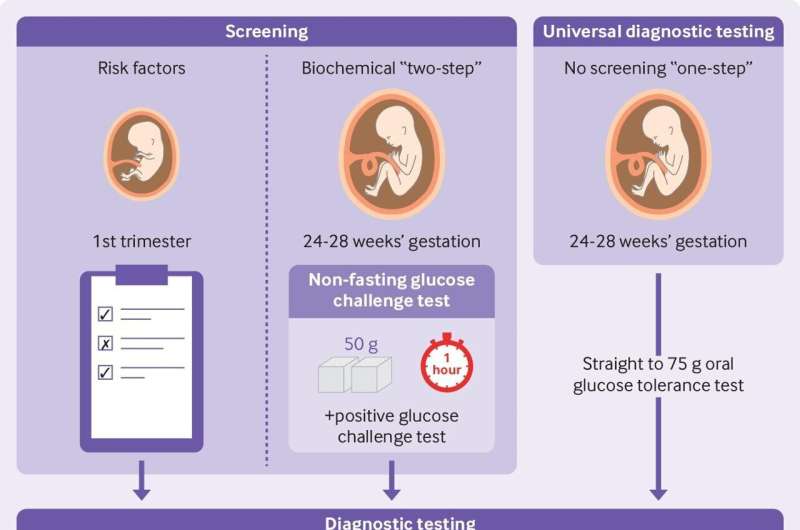This article has been reviewed according to Science X's editorial process and policies. Editors have highlighted the following attributes while ensuring the content's credibility:
fact-checked
peer-reviewed publication
trusted source
proofread
Determining a global standard for screening and diagnosing gestational diabetes

In light of several new trials challenging the status quo, the British Medical Journal (BMJ) approached Dr. Sara White to address the challenging question of how best to screen and diagnose gestational diabetes. Gestational diabetes, commonly referred to as GDM, is high blood sugar (glucose) which occurs for the first time during pregnancy and commonly disappears after giving birth.
The review, undertaken by Dr. White and a group of experts in the field, sets the scene by introducing a patient in the U.K. who has relatives in the U.S. and India, who have each undergone recent testing for GDM using different approaches from the one utilized by her hospital in the U.K.—a not uncommon clinical scenario.
The authors proceed to explain the diversity of current methods used for screening (by clinical risk factors or glucose challenge test) and diagnosis (by oral glucose tolerance test, using various glucose loads, post-load testing times and glucose thresholds for diagnosis). These methods are driven by more than 50 years of testing evolution, and the authors expand on the evidence underpinning them—or lack thereof. The review also carefully examines the controversies in the field, as well as key evidence gaps, often raising more questions than answers.
The authors conclude that there is not yet enough evidence to promote one diagnostic approach over all others, and indeed, that global standardization might be impossible to achieve given diverse populations and health care systems.
However, the review highlights that diagnosis by any locally-accepted method, followed by treatment, is important to promote better maternal and offspring outcomes. In addition, because of the diversity of approaches and unpalatability and inaccuracy of current testing methods, there is an appetite to work towards new and more mechanistically-informed methods of diagnosis.
"We anticipate that this review will be a hugely important resource for clinicians and patients alike, who may find the current situation confusing. It should act as a springboard, both for us authors and others, to push for progress in this important area," says Dr. Sara White.
More information: S L White et al, Screening and diagnosis of gestational diabetes, BMJ (2023). DOI: 10.1136/bmj-2022-071920




















